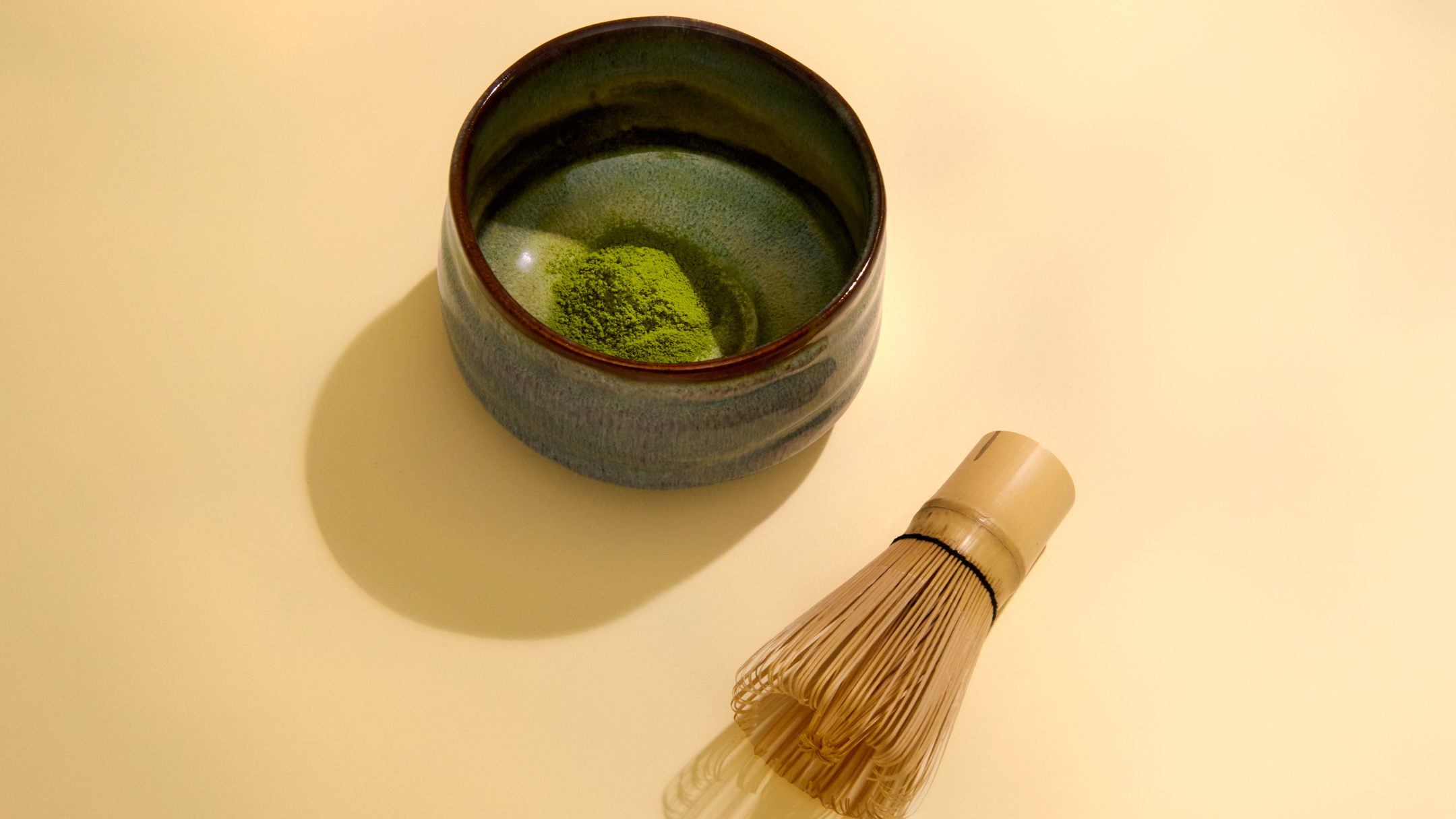Can your morning matcha really make you more mindful? Absolutely – if you let it.
Beyond its creamy glow and delicious taste, matcha holds centuries of ritual and meaningfulness. It’s more than a pick-me-up, it’s a daily pause. A chance to slow down, centre yourself and connect with others and tradition.
In this article, we follow matcha from ancient China and Japan to your morning routine. We’ll explore how its contents, like L-theanine, may gently support focus and calm. And we’ll show you how a simple moment of matcha-making can be a mindful ritual.
History of matcha and mindfulness
The very early beginnings of matcha dates to the 7th to 10th centuries in China, long before matcha lattes. As their tea preparation methods flourished, matcha was born and known as ‘whisking tea’. (Rosen, The Book of Green Tea, 1998).
It was Japanese monk Kukai who first wrote about drinking tea after returning from China in the 9th century. By the 12th century, the ritual of tea had become deeply woven into Japanese poetry and philosophy, who connected it with the importance of seasonality and the changing natural landscape. Scholars found clarity and meaningfulness in it. (Mary Lou Heiss and Robert Heiss, 2007, The Story of Tea).
By the 15th century the artistic exercise in tea drinking was born in Chanoyu, or ‘the way of tea’. Tea master Sen-no Rikyu brought an unusual combination of poetry and philosophy to the art of tea. As a result, he is credited with doing the most to formalise and ritualise chanoyu into the serene combination of art, poetry, and aesthetics that it is today.
For both the host and the guests of the tea ceremony, the etiquette and performance keep the focus of everyone on the central element of the experience: the tea. This concentration also gives participants the ability to relax, to embrace the feeling of peace that can be enjoyed over a bowl of tea. (Rosen, 1998).
Today preparing matcha respects these traditions, with a modern moment of calm and clarity in every cup we brew.

What’s in Matcha that helps with mindfulness?
Some point to L-theanine for matcha calming qualities. L-theanine is a naturally occurring amino acid is found in green tea leaves – especially in matcha (which is a powdered green tea). It’s been shown in some studies to reduce stress and support sustained concentration. Paired with a gentler form of caffeine, L-theanine helps deliver clarity without the crash (Hu, The New York Times, 2023).
How to bring mindfulness to your matcha making
The beauty of matcha is as much in the making as the drinking. Taking just five minutes to prepare your matcha mindfully can be a daily reset. The slow scoop of bright green powder. The swirl of hot water. The technique of the whisk.
-
Prepare
Scoop your matcha intentionally. Slowly, steady and focused.
-
Whisk with rhythm
Use your wrist in a gentle ‘M’ motion until the froth forms.
-
Sip with attention
Pause between sips. Notice the flavour notes, the texture, the warmth.

Brew tip
Using 80°C will make matcha with a fresh and light taste, using boiling water (100°C) may burn the delicate powder leaving you with a bitter taste. To get 80°C water, simply combine boiling water with a splash of cold before pouring into your bowl.One final step: make it a meditation
When your matcha is whisked and ready for drinking – turn the quiet moment into a short meditation. Find a comfy place to sit, hold your warm cup in hand and focus on your breathing. Enjoy the soothing warmth in your hands as it anchors you. These few moments of quiet can carry calmness into the rest of your day.





















